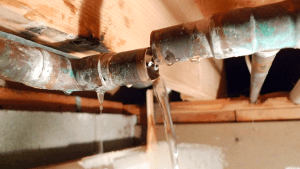Find Concealed Water Line Leaks: Six Ingenious Detection Tips
Find Concealed Water Line Leaks: Six Ingenious Detection Tips
Blog Article
What are your opinions on Leaking water lines?

Early discovery of dripping water lines can reduce a prospective disaster. Some small water leaks may not be noticeable.
1. Examine the Water Meter
Every home has a water meter. Inspecting it is a guaranteed manner in which assists you uncover leaks. For starters, switch off all the water resources. Ensure no one will flush, use the faucet, shower, run the cleaning maker or dish washer. From there, most likely to the meter and watch if it will certainly transform. Since no one is using it, there must be no motions. That shows a fast-moving leak if it relocates. Similarly, if you detect no changes, wait a hr or more as well as inspect back again. This suggests you may have a slow-moving leak that could even be underground.
2. Inspect Water Consumption
If you detect unexpected adjustments, despite your intake being the exact same, it implies that you have leaks in your plumbing system. An unexpected spike in your bill indicates a fast-moving leak.
On the other hand, a constant rise monthly, despite having the exact same practices, reveals you have a sluggish leak that's additionally slowly intensifying. Call a plumber to completely check your home, specifically if you really feel a cozy location on your floor with piping beneath.
3. Do a Food Coloring Examination
When it comes to water usage, 30% comes from toilets. Examination to see if they are running appropriately. Drop flecks of food color in the storage tank as well as wait 10 minutes. If the shade somehow infiltrates your dish throughout that time without flushing, there's a leak between the tank and bowl.
4. Asses Exterior Lines
Do not fail to remember to check your outside water lines also. Test faucets by attaching a garden hose. Should water permeate out of the connection, you have a loosened rubber gasket. Change this as well as ensure all links are limited. If you've got an automatic sprinkler, it will assist get it expertly examined as well as kept yearly. One little leakage can lose lots of water and also surge your water bill.
5. Evaluate the scenario as well as evaluate
House owners must make it a practice to inspect under the sink counters and also even inside cupboards for any kind of bad odor or mold and mildew growth. These two red flags suggest a leakage so punctual focus is required. Doing routine assessments, also bi-annually, can save you from a major problem.
A lot more importantly, if you know your house is currently old, keep a watchful eye on your heaters, tubes, pipelines etc. Look for stainings and also compromising as many appliances and also pipes have a life span. They will additionally naturally weaken because of deterioration. Don't wait for it to escalate if you suspect dripping water lines in your plumbing system. Call an expert plumber right away so you do not wind up with a horrible mess in your home.
Early discovery of dripping water lines can minimize a potential calamity. Some tiny water leakages may not be visible. Inspecting it is a surefire means that helps you uncover leakages. One small leak can throw away bunches of water as well as spike your water costs.
If you think dripping water lines in your plumbing system, don't wait for it to intensify.
WARNING SIGNS OF WATER LEAKAGE BEHIND THE WALL
PERSISTENT MUSTY ODORS
As water slowly drips from a leaky pipe inside the wall, flooring and sheetrock stay damp and develop an odor similar to wet cardboard. It generates a musty smell that can help you find hidden leaks.
MOLD IN UNUSUAL AREAS
Mold usually grows in wet areas like kitchens, baths and laundry rooms. If you spot the stuff on walls or baseboards in other rooms of the house, it’s a good indicator of undetected water leaks.
STAINS THAT GROW
When mold thrives around a leaky pipe, it sometimes takes hold on the inside surface of the affected wall. A growing stain on otherwise clean sheetrock is often your sign of a hidden plumbing problem.
PEELING OR BUBBLING WALLPAPER / PAINT
This clue is easy to miss in rooms that don’t get much use. When you see wallpaper separating along seams or paint bubbling or flaking off the wall, blame sheetrock that stays wet because of an undetected leak.
BUCKLED CEILINGS AND STAINED FLOORS
If ceilings or floors in bathrooms, kitchens or laundry areas develop structural problems, don’t rule out constant damp inside the walls. Wet sheetrock can affect adjacent framing, flooring and ceilings.
https://www.servicemasterbyzaba.com/blog/how-to-detect-water-leakage-in-walls/

Hopefully you enjoyed our topic on Top leak detection hacks. Thanks a lot for taking the time to read our short article. For those who enjoyed reading our blog post if you please don't forget to pass it around. We truly appreciate reading our article about Locating water leaks.
Need quality service? Report this page